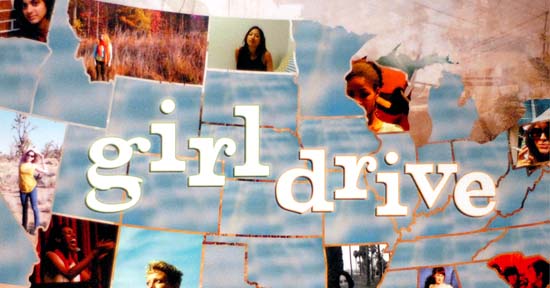“˜Girldrive’ takes a tour of feminism in the US

The feminist book, “Girldrive: Criss-Crossing America, Redefining Feminism,” is written by Nona Willis Aronowitz and Emma Bee Bernstein. The book includes interviews with women throughout the nation, including a UCLA graduate student.
By Jack Moss
Nov. 3, 2009 9:26 p.m.
In 2007, writer Nona Willis Aronowitz and photographer Emma Bee Bernstein, who were childhood friends, decided to hit the road, leaving behind their lives in New York and beginning a journey in Aronowitz’s Chevy Cavalier that would take them across America.
But this was no ordinary road trip.
Instead, the pair had a mission: to investigate how other 20-something-year-old women defined their place in society, questioning their hopes, fears and desires. Ultimately, Aronowitz and Bernstein posed the question themselves: “What does feminism mean to our generation?”
It was this adventure that became the basis of their book, “Girldrive: Criss-Crossing America, Redefining Feminism,” published on Nov. 1 by Seal Press.
Bernstein died in December last year. However, “Girldrive” stands as a fitting memorial for the photographer, providing an all-encompassing view into the scope of young women’s experiences across the USA today.
The book fuses together diary entries, vivid photographs and conversations with a diverse group of women from across the country.
“It all came together this one day,” Aronowitz said. “In order to get the full picture, we had to go on the road. We started by e-mailing hundreds of people we knew ““ women who were doing cool things, who were eloquent.”
Originally, Aronowitz and Bernstein decided to arrange the book thematically, but this proved difficult as the interviews began to take place.
“The stories were so based on particular communities,” Aronowitz said. “We wanted to have our finger on the pulse regionally.”
“L.A. was really interesting. We spoke to a handful of women,” Aronowitz said. “Many of them related their experiences to the entertainment industry.”
Lillian Nobel, a UCLA graduate student in architecture, was one of the women interviewed.
She, too, found herself in a complex position in relation to the dominant media portrayals of women found in Los Angeles’ entertainment industry.
“I have a love-hate relationship with fashion photography,” she explained. “Women are portrayed as sadomasochistic; we are drawn to them and repulsed by them at the same time”.
Nobel met Bernstein whilst in Israel, and described their initial bond: “We are both artists, and so we had that in common. Both of our work had something to do with female figures,” Nobel said.
When Bernstein and Aronowitz arrived in Los Angeles, they called up Nobel and asked to talk to her.
“It was very casual, just over dinner,” Nobel said of the interview, which took place in her parent’s home in Bel Air. “My mom made dinner.”
This casual atmosphere was what the writers aimed to achieve. Aronowitz was quick to point out that these were not just formal interviews, but “peer-to-peer chill sessions.”
Alongside this casual atmosphere, the pair did not just draw from the usual sources. Alongside feminist pioneers Erica Jong and Michele Wallace, they also talked to a burlesque group, a sex shop clerk and a future nun.
“The ulterior motive of (the project) was to raise consciousness of the issues affecting women today,” Aronowitz said.
Nobel said, “It doesn’t just paint one portrait of what a feminist might be. It was good to know that there were people that thought my opinion was important. I felt I fitted into a greater network of people.”
Cindy Le, part of the executive board of Bruin Feminists for Equality, who promote both activism and awareness of women’s issues on campus, also she said believes that connection and conversation among young women is crucial.
“Connecting one-on-one with somebody is really important,” said Le, a third-year sociology and women’s studies student. “We can all get together and get to know each other as individuals and not just feminists.”
Aronowitz continues the conversation started in “Girldrive” through her blog of the same name, highlighting women who are doing works within their communities and encouraging Internet users to join the “Girldrive” community.
“You don’t have to be a young woman to be involved,” Aronowitz said.


